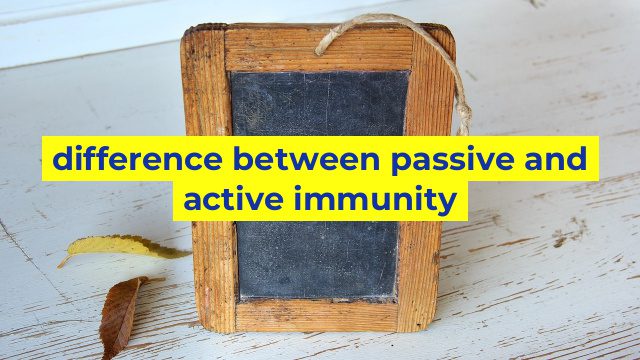Understanding the Difference between Passive and Active Immunity
When it comes to the fight against infections and diseases, the immune system plays a vital role in keeping us healthy. There are two types of immunity that work together to protect us: passive and active immunity. While both are important, they differ in the way they develop and provide protection.
Active Immunity
Active immunity is developed when the immune system is stimulated to produce its own immune response against a foreign substance, such as a virus or bacterium. This can occur naturally, such as when we encounter an illness and our immune system responds by producing antibodies to fight it off. Alternatively, it can be induced through vaccination. Vaccines contain small amounts of weakened or dead viruses or bacteria that trigger the immune system to produce a response and develop memory cells. These memory cells remain in our systems, providing long-term immunity against future exposure to the same pathogen.
Active immunity can take time to develop, with the immune system needing to build up defenses over days or weeks. However, once established, it can provide strong and long-lasting protection against infection.
Passive Immunity
Passive immunity, on the other hand, involves the transfer of pre-formed antibodies from one individual to another. This can occur naturally, such as when a mother passes on antibodies to her fetus through the placenta or via breast milk. It can also be artificially induced by injecting antibodies from an immune individual into a non-immune person.
While passive immunity provides immediate protection against a specific pathogen, it is short-lived and only provides temporary protection. The transferred antibodies are broken down and eliminated from the body over time, leaving the individual susceptible to future infections.
Conclusion
Both types of immunity are important in protecting us against infections and diseases. Active immunity provides long-term and robust protection against pathogens, while passive immunity can provide immediate but short-lived protection. Vaccinations offer an effective way to induce active immunity, helping our bodies build up defenses against a wide range of pathogens. Although, passive immunity may be required in certain situations such as during pregnancy, or in healthcare settings, where a rapid immune response is required. Understanding the difference between the two can aid in the development and implementation of effective strategies to prevent and treat infections.
Table difference between passive and active immunity
| Passive Immunity | Active Immunity |
|---|---|
| Temporary protection | Long-lasting protection |
| Acquired from external sources | Acquired from own immune system |
| Preformed antibodies are administered | Body produces its own antibodies |
| Immediate protection | Takes time to develop protection |
| Examples: Mother’s milk, immunoglobulin therapy | Examples: Vaccinations, exposure to disease |
